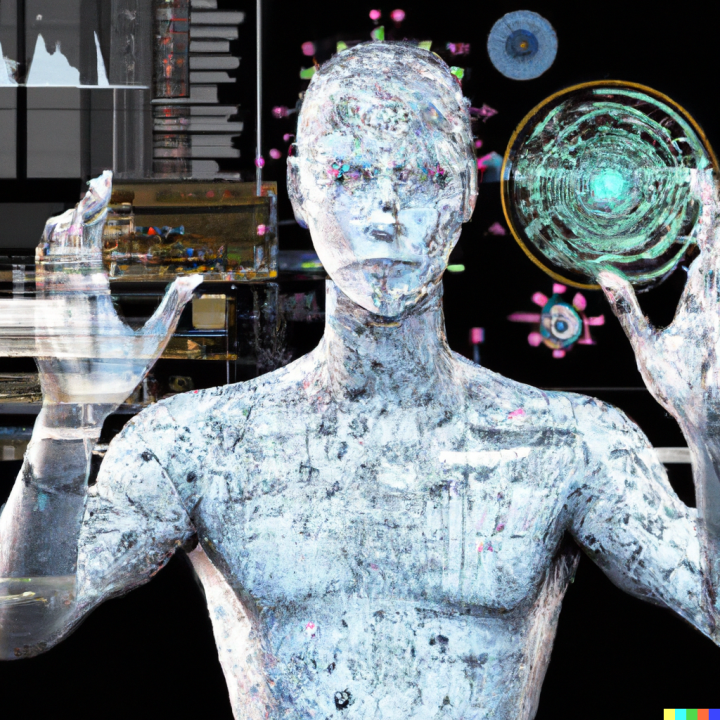Enhancing Robotic Creativity with Large Language Models
Introduction
The intersection of robotics and artificial intelligence (AI) has paved the way for significant advancements in the field. Researchers at Carnegie Mellon University and Google DeepMind have recently developed a groundbreaking system called RoboTool, which leverages large language models (LLMs) to enhance the creative capabilities of robots. This innovative system allows robots to use tools in more creative and unconventional ways, opening up new possibilities for problem-solving in complex real-world scenarios.
The Importance of Creative Tool Use in Robotics
Tool use has long been considered a hallmark of advanced intelligence, observed in various animal species. From apes stacking crates to reach bananas to macaques using stones to crack open nuts, animals have demonstrated the ability to employ tools in clever and unconventional ways. However, robots often rely on standard and repetitive methods to complete tasks, lacking the flexibility to explore alternative approaches. By fostering creative tool use in robots, researchers aim to enable them to tackle complex tasks more effectively.
The Role of Large Language Models in Robotics
The advent of large language models (LLMs) has revolutionized various fields, including chatbots, coding automation, and visual content creation. These models have significantly enhanced the functionalities of digital interfaces. However, the researchers at Carnegie Mellon University and Google DeepMind recognized the potential of LLMs in embodied AI, where robots interact tangibly with the real world. They sought to leverage LLMs to enhance robots’ reasoning, planning, and task execution abilities.
Introducing RoboTool: A Creative Tool Use System
To achieve their goal, the researchers developed RoboTool, a system that enables robots to use tools creatively by generating code based on natural language instructions. RoboTool consists of four key components: an analyzer, a planner, a calculator, and a coder. The analyzer processes user prompts in natural language, identifying crucial elements that affect the feasibility of a requested task. The planner formulates a comprehensive strategy, and the calculator determines the necessary parameters. Finally, the coder converts the plan and parameters into executable code.
Empowering Robots with Creative Problem-Solving Abilities
RoboTool empowers robots to approach a wide range of tasks creatively. It allows them to devise solutions to seemingly impossible problems, such as lifting heavy objects or reaching out-of-grasp items. For example, a robot equipped with RoboTool could create a lever to lift heavy boxes or use magnetic cubes to fashion a stick for pressing buttons that are out of reach. This creative problem-solving capability opens up numerous possibilities for robots in various domains.
Applications of RoboTool
The potential applications of RoboTool are vast and diverse. In household tasks, robots could utilize RoboTool to perform complex chores like unclogging drains or fixing broken furniture using the available tools. Additionally, in critical situations, such as rescuing individuals trapped under debris or in collapsed structures, robots equipped with RoboTool could improvise with available tools to reach and aid those in need. Furthermore, in construction and maintenance, robots could adaptively fix machinery or structures using whatever tools are at their disposal, or even create intricate designs by creatively combining traditional tools.
Future Developments and Improvements
The researchers are continuously working to enhance RoboTool and explore further possibilities. They plan to incorporate large vision foundation models that support 3D computer vision, which will enhance robots’ sensing and reasoning capabilities in open-world environments. Additionally, they aim to develop intuitive ways for humans to instruct and collaborate with RoboTool, ensuring seamless interaction between humans and robots. Moreover, safety measures will be established to mitigate risks when robots work alongside humans.
Conclusion
The development of RoboTool represents a significant leap forward in the field of robotics. By leveraging large language models, robots can now approach tasks with enhanced creativity and problem-solving abilities. The ability to use tools in unconventional ways opens up new possibilities for robots in various domains, from household tasks to critical situations and construction projects. As researchers continue to improve and expand upon the capabilities of RoboTool, the future of robotics holds immense potential for innovation and advancement.
